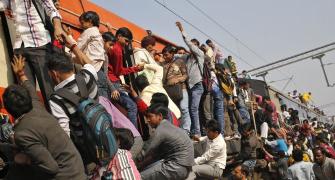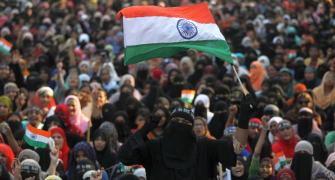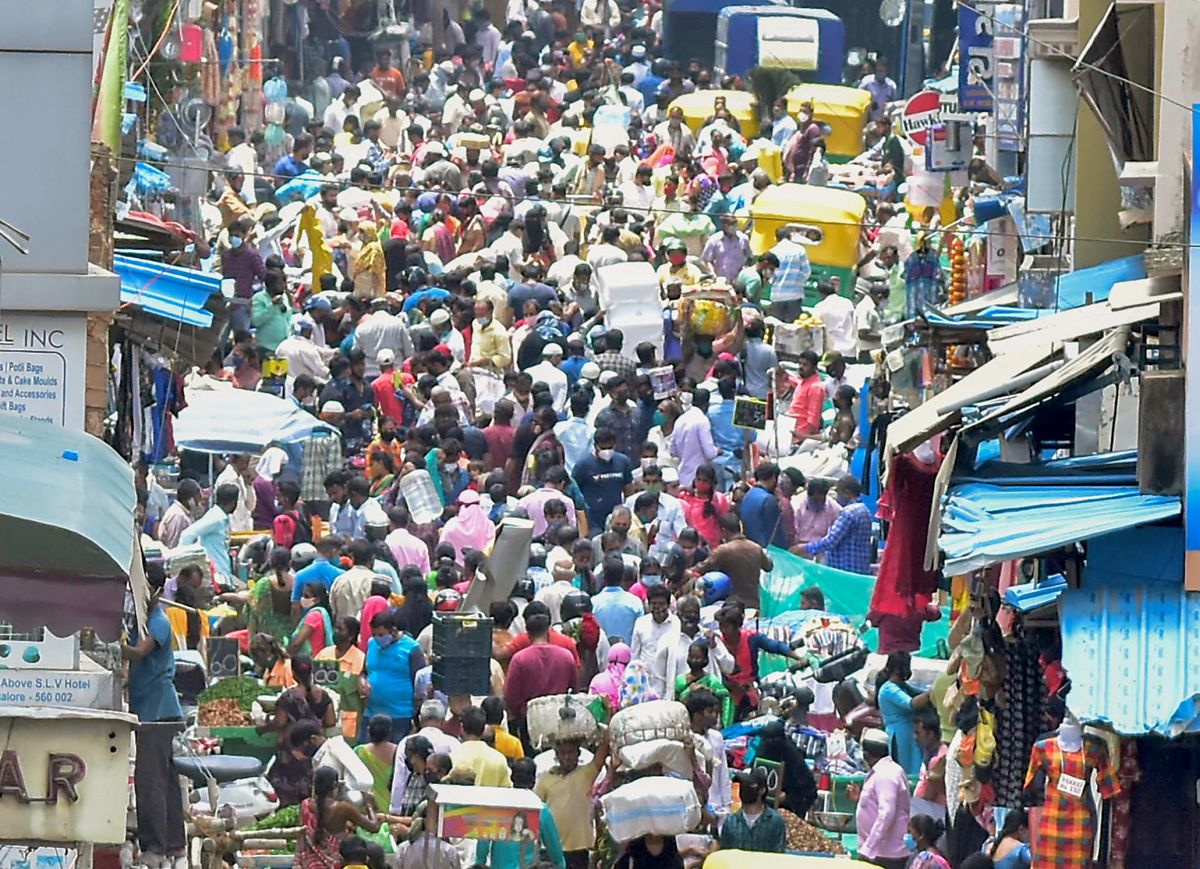In the Interim Budget, Finance Minister Nirmala Sitharaman announced that a high power committee would be set up to consider the challenges arising from 'fast population grown and demographic changes.'
'But who wants data? It pays to feed people's fears, insecurities and apprehensions. If such fears don't exist, they must be created,' her husband Parakala Prabhakar says in this fascinating excerpt from his book, The Crooked Timber of New India: Essays on a Republic in Crisis.
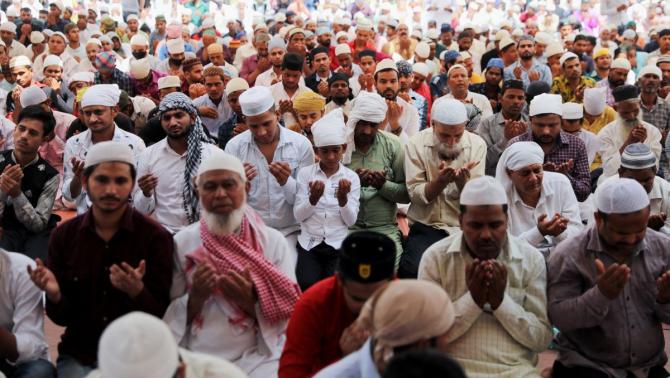
It is not difficult to see that most families are limiting the number of children.
We only need to look around. Or look back to our own families or the families in our neighbourhood. Let me tell you about my own family.
My wife had only one delivery. All my siblings had only one delivery in their families.
I can see that 90% of my friends and classmates have two children.
But you could, justifiably, accuse me of thinking that the world comprises only my family, friends and social class.
So I took a kind of dipstick survey of lower income groups.
Over four of five days, I talked to some people who haven't had even a fraction of the opportunities and advantages that people like me have had.
Construction workers, domestic helps, women who work as ayahs in a nearby school, a middle-aged man who was minding his herd of sheep.
Of the 15 people I spoke to who had children, 12 had only two. One had three, and two had one child each.
I was prepared for a complete refutation of this dipstick survey finding.
For, unless the larger trends are showing a totally different picture, why would the prime minister speak of his worry about population 'explosion' on a momentous occasion like the 2019 Independence Day speech?
I began by looking at the total fertility rate. I looked at data from 1950 to 2021.
Total fertility rate (TFR) is the average number of children delivered by women in their reproductive age.
The TFR was 5.9 from 1950 to 1956, declined slightly in 1957, then stayed at 5.7 till 1965. The TFR declined consistently after that, dropping to 2.9 by 2002.
In 2021 it came down to 2.179. This is just a tiny bit above replacement level, which is 2.1. This is considered the ideal level.
If the TFR is under 2, the population begins to contract and that creates huge problems -- reduction in workforce; fewer younger, productive people who can earn to feed and help sustain the growing number of elderly; economic slowdown; rising healthcare costs.
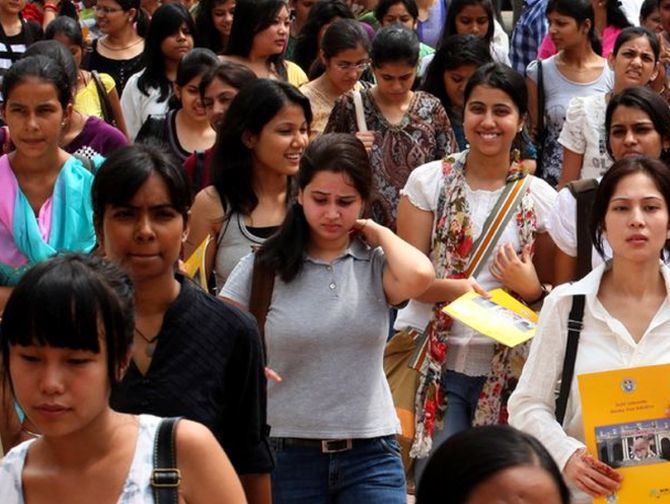
Our country is already almost at the replacement level. Is our prime minister unaware of this? Did he say what he said in his Independence Day address without looking at the data? Or did he simply ignore the data? Both possibilities should worry us.
The first government-level concern about population growth was expressed in Assam.
The BJP government there came up with a Population and Women Empowerment Policy in September 2017 to deal with the 'problem'.
But Assam had reached near replacement level in 2011 itself. The TFR in Assam was 3.2 in 2001. It declined to 2.2 in just a decade without any such a policy.
The present chief minister, Himanta Biswa Sarma, who was finance minister in 2017, moved a resolution in the state assembly and said, 'Census data shows that the Hindu population has declined while the minority has witnessed a sharp increase... The change in Assam's demographics is a matter of concern.'
After he became chief minister, Sarma asked Assam's Muslims to adopt 'decent' family planning measures.
He predicted conflicts over living space if their population continued to 'explode'.
The target, in other words, is not the general population stabilisation of the state, but to reduce the growth rate of the Muslim population.
But what did data from the then latest National Family Health Survey (NFHS-5), released in December 2020, tell us about the scene in Assam? Did the figures give the chief minister cause for worry?
The Muslim community's TFR in Assam according to NFHS-5 is at 2.4. It is indeed higher compared to 1.6 for Hindus and 1.5 for Christians. However, the significant point is that it is not increasing -- neither 'sharply', as the chief minister wants us to believe, nor even modestly.
In fact, the fertility among Muslims has witnessed a sharp decline. It dropped from 3.7 in 2005-06 to 2.4 in 2019-20. That's just 0.3 short of the replacement level!
But who wants data? It pays to feed people's fears, insecurities and apprehensions. If such fears don't exist, they must be created.
Indeed, the strategy appeared to have paid off in the 2021 Assam elections, when the BJP returned to power with a higher number of seats in the assembly. And after the elections, the scare-mongering finance minister was promoted to chief minister.
The message was not lost on other state governments run by the BJP.
What the Assam BJP began doing three years before elections in that state, UP begins six months ahead of the state election.
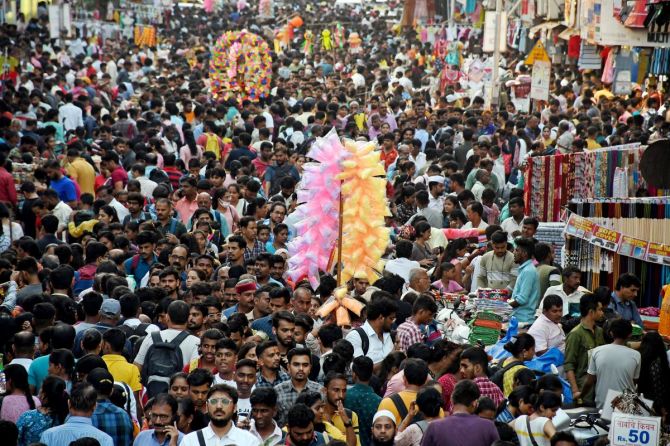
Yogi Adityanath's UP government claims that the draft bill announced on 9 July 2021 was in the making for about three years.
On World Population Day, 11 July, he announced the objectives of the new population policy of the state for the decade 2021-30.
The chief one was 'reducing the fertility rate and ensuring population balance among various communities'.
The trend in the state as well as in the entire country is anyway a steady decline in the TFR.
Therefore, it looks more like an attempt to bring about a 'balance between different communities', meaning religious groups.
In the chief minister's words, 'Yeh prayas bhi kiya jayega ki vibhinn samudayon ke madhya jansankhya ka santulan bana rahe.' ('Effort will be made to ensure a balance in population among various communities.')
Now let's see if there is indeed such a worrying imbalance in UP. Let's examine the TFR gap between Muslim and Hindu women and see if that warrants a policy like this.
Between 2001 and 2011, the Hindu TFR declined by 1.5, from 4.1 to 2.6. In the same period, the Muslim TFR declined by 1.9, from 4.8 to 2.9. It shows clearly that the gap between Hindus and Muslims in TFR is rapidly closing.
In 2001 it was 0.7 and by 2011 the gap came down to 0.3. Without any incentives and disincentives.
In any case, the latest survey has shown that in every state, the TFRs of both Hindus and Muslims are steadily declining.
No state, without exception, has shown either a stagnation or a reversal of the declining trend.
Looking at the data from NFHS-4 and NFHS-5, we see that all but five states have already achieved replacement level of fertility.
And even in these five -- Bihar, Jharkhand, UP, Manipur and Meghalaya -- the TFR has been dropping consistently.
But again, who wants data? What is needed is fear, apprehension, insecurity among communities, a feeling that 'our' poverty is because of 'them'.
'Our' unemployment is because of 'their' numbers. Such policy consolidates 'us' against 'them'. When it paid in Assam, it will pay in UP.
But the formal position of the Government of India remains a shining example of an enlightened and data-driven policy.
Contrary to what the leader of the same government says in his Independence Day address to the nation.
In response to a PIL in the Supreme Court seeking implementation of a two-child norm to check the country's population, the Union government said in its affidavit that India's population policy is 'unequivocally against coercion in family planning', and that the country's TFR is 'witnessing a constant decline'.
This was said to the Supreme Court by the Union government in an affidavit a year and a half after the prime minister's address to the Nation on Independence Day in 2019 in which he expressed concern about our growing population.
More than two years after the Assam population policy. And eight months after that submission to the Supreme Court by the central government, the Uttar Pradesh draft bill was announced.
So what is policy and what politics?
What the government tells the Supreme Court on population is policy. What the PM says on Independence Day from the ramparts of the Red Fort is politics.
What the BJP does in the states it rules is exactly the same politics.
The politics of 'us' versus 'them'. So that 'us' feel insecure. So that 'us' fear 'them'. And then 'us' reject 'them'. 'Us' don't want 'them'.
So 'us' vote for the BJP. For the religion of 'us'. For the language of 'us'. For the identity of 'only us'.
Excerpted from The Crooked Timber of New India: Essays on a Republic in Crisis, by Parakala Prabhakar, with the kind permission of the publishers Speaking Tiger.
Feature Presentation: Rajesh Alva/Rediff.com


